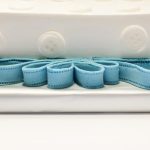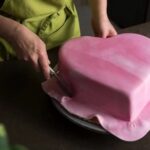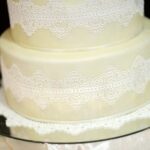Icing sugar plays a crucial role in creating beautifully decorated cakes, adding a touch of sweetness and a smooth, glossy finish to any baked creation. In this article, we will delve into the process of how to make icing sugar at home to elevate your cake decorating game. Whether you’re a baking enthusiast looking to impress your guests or someone with dietary restrictions seeking homemade alternatives, learning how to make icing sugar from scratch is a valuable skill.
To begin, understanding the different types of icing sugar used for cake decoration is essential. From powdered sugar to confectioners’ sugar, each type brings its unique texture and sweetness level to your creations. By mastering the art of making icing sugar at home, you can tailor the sugar’s consistency and sweetness according to your preferences and needs. With just a few simple ingredients and tools, you can easily whip up a batch of homemade icing sugar in no time.
One of the key benefits of making icing sugar at home is the ability to control the quality and purity of the ingredients used. By choosing high-quality components free from unwanted additives or preservatives, you can ensure that your homemade icing sugar enhances both the taste and appearance of your cakes.
In the following sections, we will explore in detail the ingredients needed, equipment required, step-by-step process, tips and tricks for success, alternative options for dietary restrictions, creative ideas for using homemade icing sugar in various ways, empowering you to take your cake decorating skills to new heights.
What Is Icing Sugar
Icing sugar, also known as powdered sugar or confectioner’s sugar, is a key ingredient in cake decoration and baking. It is used to make frosting, glazes, and decorative elements for cakes, cupcakes, cookies, and other sweet treats. Icing sugar is finely ground granulated sugar mixed with a small amount of cornstarch to prevent clumping. This results in a smooth texture that is ideal for creating delicate decorations on baked goods.
There are different types of icing sugars available in the market, each serving a specific purpose in cake decoration. Some common types include:
- Regular Icing Sugar: This is the most commonly used type of icing sugar for general baking and cake decorating purposes.
- Fondant Icing Sugar: Fondant icing sugar has added ingredients that make it more pliable and suitable for creating intricate designs and decorations on cakes.
- Glazing Sugar: Glazing sugar is a finer version of icing sugar that is perfect for making shiny glazes for cakes and pastries.
Making your own icing sugar at home allows you to have full control over the ingredients and customize it according to your preferences. To make icing sugar from scratch, all you need is granulated white sugar and cornstarch. Simply blend the two ingredients together until you achieve a fine powder-like consistency. You can adjust the sweetness by adding more or less sugar depending on your taste preference.
Creating your own homemade icing sugar not only gives you the flexibility to adjust the sweetness level but also ensures that you know exactly what goes into your baked goods. Whether you’re looking to make a simple buttercream frosting or intricate fondant decorations, mastering the art of making icing sugar at home will elevate your baking skills and impress your friends and family with beautifully decorated cakes.
Ingredients Needed
Making icing sugar at home is a simple and cost-effective way to elevate your cake decorating game. With just a few key ingredients, you can create a smooth and sweet frosting that will bring your baked creations to the next level. Here is a detailed list of ingredients you will need to make icing sugar:
- Granulated sugar: The main ingredient in making icing sugar is granulated sugar. This will be the base for your homemade frosting.
- Cornstarch: Adding cornstarch to the granulated sugar helps to prevent clumping and creates a lighter texture in the final product.
- Food processor or blender: You will need a food processor or blender to grind the granulated sugar into a fine powder.
To make icing sugar, simply combine the granulated sugar and cornstarch in a food processor or blender. Process until the mixture becomes a fine powder, similar to store-bought icing sugar. This process may take several minutes, depending on the power of your appliance.
Once your homemade icing sugar is ready, store it in an airtight container to keep it fresh for future use. You can use this versatile frosting to decorate cakes, cupcakes, cookies, and other treats. Experiment with different flavors and colors by adding extracts or food coloring to customize your icing sugar for any occasion.
Equipment Required
Icing sugar, also known as powdered sugar or confectioner’s sugar, plays a crucial role in cake decoration. It adds sweetness and a smooth texture to various types of frosting and glazes used to decorate cakes. Making icing sugar at home is a cost-effective and convenient way to ensure you have this essential ingredient on hand whenever you need it.
To make icing sugar at home, you will need some key equipment to begin the process. The most essential tool needed is a high-speed blender or food processor. These appliances are necessary to grind granulated sugar into a fine powder that resembles commercial icing sugar. Additionally, you will need a sifter or sieve to remove any lumps from the powdered sugar for a smooth consistency.
One useful tip when making your own icing sugar at home is to ensure that the equipment you use is clean and dry before starting the process. This will prevent any contaminants from affecting the flavor or texture of the final product. By following these simple steps and having the right tools on hand, you can easily create homemade icing sugar to decorate your cakes and other baked goods in no time.
| Equipment Needed | Description |
|---|---|
| High-speed blender or food processor | Used to grind granulated sugar into powdered form |
| Sifter or sieve | Helps remove lumps from the powdered sugar for smooth consistency |
Step-by-Step Process
Icing sugar, also known as powdered sugar or confectioner’s sugar, is a crucial ingredient in cake decoration. Its fine texture allows for smooth and creamy icing that can be easily spread or piped onto cakes, cookies, and other baked goods. Making your own icing sugar at home is not only cost-effective but also ensures that you have full control over the ingredients used. Here’s how to make icing sugar to decorate a cake from scratch.
To make icing sugar at home, you will need just two ingredients: granulated sugar and cornstarch. The cornstarch helps to prevent the sugar from clumping together and maintains the smooth texture of the icing sugar. Simply blend the granulated sugar and cornstarch together in a blender or food processor until you achieve a fine powder-like consistency. You may need to sift the mixture through a fine mesh sieve to remove any remaining lumps.
| Ingredient | Measurement |
|---|---|
| Granulated Sugar | 1 cup |
| Cornstarch | 1 tablespoon |
Tips and Tricks
When it comes to decorating a cake, icing sugar plays a crucial role in creating that perfectly sweet and smooth finish. Whether you’re a baking enthusiast or just someone looking to add a special touch to your baked goods, learning how to make icing sugar at home can be incredibly rewarding. Not only is it cost-effective, but it also allows you to customize the sweetness and texture of the icing to suit your preferences.
One helpful tip for making homemade icing sugar is to ensure that your granulated sugar is completely pulverized into a fine powder before using it. This can be achieved by using a blender or food processor on high speed until the sugar reaches the desired consistency. Sifting the powdered sugar afterwards can also help remove any lumps and ensure a smooth texture for your icing.
Another important trick for perfecting your homemade icing sugar is to store it properly to maintain its freshness and prevent clumping. It is recommended to keep the icing sugar in an airtight container in a cool, dry place away from moisture.
Adding a tablespoon of cornstarch to the mixture can also help prevent caking and improve the stability of the icing when decorating your cakes. With these simple tips and tricks in mind, you’ll be well on your way to mastering the art of making icing sugar at home for all your baking endeavors.
Alternative Options
For individuals with dietary restrictions such as diabetes or those following a vegan or gluten-free diet, traditional icing sugar may not be suitable. However, there are alternative methods and ingredients that can be used to make icing sugar at home without compromising taste or texture.
One popular substitute for traditional icing sugar is using powdered sweeteners like erythritol or xylitol for a low-carb option. These sweeteners can be easily ground into a fine powder using a blender or food processor to achieve the desired consistency for decorating cakes.
Using Natural Sweeteners
Another alternative option for making icing sugar is to use natural sweeteners like stevia or monk fruit. These plant-based sweeteners provide a healthy and low-calorie alternative to traditional sugar, making them ideal for those looking to reduce their sugar intake while still enjoying delicious treats. To make icing sugar using natural sweeteners, simply blend the sweetener of choice with a small amount of cornstarch to help thicken the mixture and achieve the right consistency for decorating cakes.
Gluten-Free Options
For individuals with gluten sensitivities or celiac disease, it’s important to use gluten-free ingredients when making icing sugar at home. One commonly used ingredient in traditional icing sugar is cornstarch, which is naturally gluten-free.
By ensuring that all ingredients are certified gluten-free, those with dietary restrictions can enjoy homemade icing sugar without any adverse reactions. Additionally, using organic powdered sugar made from pure cane sugar can also be a safe option for those looking to avoid gluten-containing additives in store-bought icing sugars.
Creative Ideas
Using Stencils and Templates
One creative way to use homemade icing sugar to decorate cakes and other baked goods is by using stencils and templates. This technique allows you to create intricate designs and patterns on your desserts with ease.
Simply place the stencil or template on top of the cake or cookie, sprinkle the icing sugar over it, then carefully lift it off to reveal a beautifully decorated treat. You can find a wide variety of stencils and templates online or at baking supply stores to suit any occasion or theme.
Creating Ombre Effects
Another fun way to use homemade icing sugar is by creating ombre effects on your baked goods. To achieve this look, start by making different shades of icing sugar using food coloring.
Begin with the lightest shade at the top or edges of your cake or cookies, then gradually transition to darker shades towards the center or bottom. Use a sifter or fine mesh strainer to dust each layer of icing sugar evenly for a smooth ombre effect that will surely impress your guests.
Adding Texture and Dimension
Homemade icing sugar can also be used to add texture and dimension to your cakes and other treats. Consider using different piping tips or tools to create raised designs, swirls, or even 3D shapes with the icing sugar. You can also mix in edible glitters, sprinkles, or colored sanding sugars for added sparkle and visual interest. Experiment with various techniques and tools to see how you can elevate your baked creations with beautifully crafted homemade icing sugar decorations.
Conclusion
In conclusion, icing sugar plays a crucial role in enhancing the appearance and taste of cakes through decorative elements. By understanding how to make icing sugar at home, bakers have the opportunity to take their creations to the next level with personalized touches. The process of making icing sugar is relatively simple, requiring just a few key ingredients and some basic kitchen equipment.
By following the step-by-step instructions provided in this article, individuals can easily create their own icing sugar from scratch. From choosing the right type of sugar to determining the desired consistency for decorating purposes, mastering the art of homemade icing sugar opens up a world of creative possibilities. Experimenting with different colors, flavors, and techniques can truly elevate any baked good to a professional level.
I encourage all readers to give making their own icing sugar a try for their next baking project. Not only does it allow for customization and control over ingredients, but it also adds a personal touch to any dessert creation. Whether you’re a novice baker or an experienced pastry chef, learning how to make icing sugar at home is a valuable skill that will undoubtedly impress friends and family with beautifully decorated cakes and sweet treats.
Frequently Asked Questions
How to Make Icing Sugar for Decorating Cakes?
Making icing sugar for decorating cakes is a simple process that only requires one ingredient: granulated sugar. All you need to do is pulse the granulated sugar in a food processor until it turns into a fine powder. This homemade icing sugar can be used to decorate cakes, cookies, and other baked goods.
How to Make Your Own Icing Sugar?
Making your own icing sugar at home is an easy process that allows you to control the sweetness and texture of the final product. Simply blend granulated sugar in a high-speed blender or food processor until it becomes a fine powder. You can also add cornstarch if you want to thicken the consistency of the icing sugar.
How Do You Decorate a Cake With Powdered Sugar?
Decorating a cake with powdered sugar is a classic method that adds a touch of elegance to any dessert. To do this, place a paper doily or stencil over the cake and dust powdered sugar on top using a fine-mesh sieve or shaker. Carefully lift off the doily or stencil to reveal a beautifully decorated cake.

Welcome to my blog about home and family. This blog is a place where I will share my thoughts, ideas, and experiences related to these important topics. I am a stay-at-home mom with two young children. I hope you enjoy reading it! and may find some helpful tips and ideas that will make your home and family life even better!





